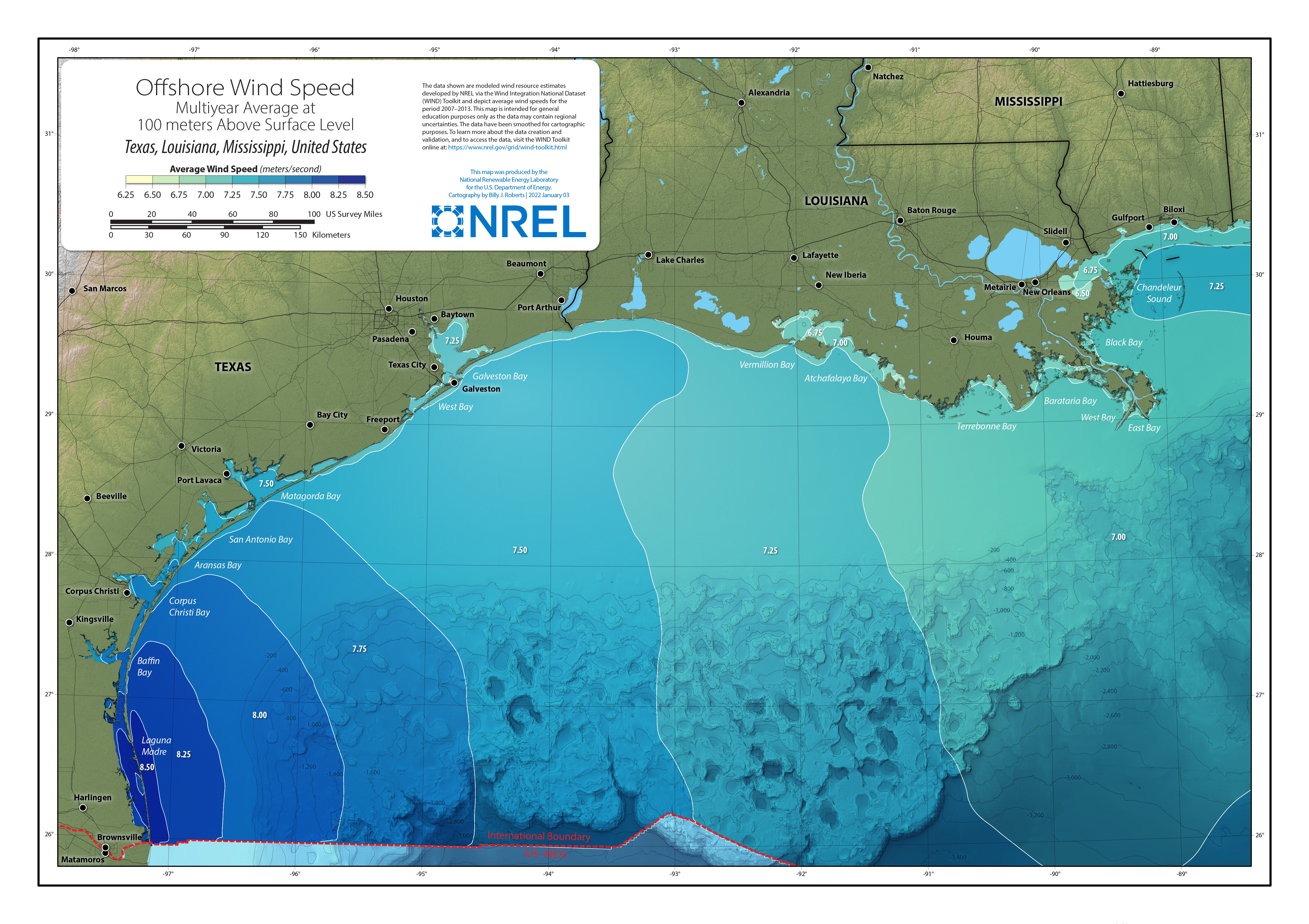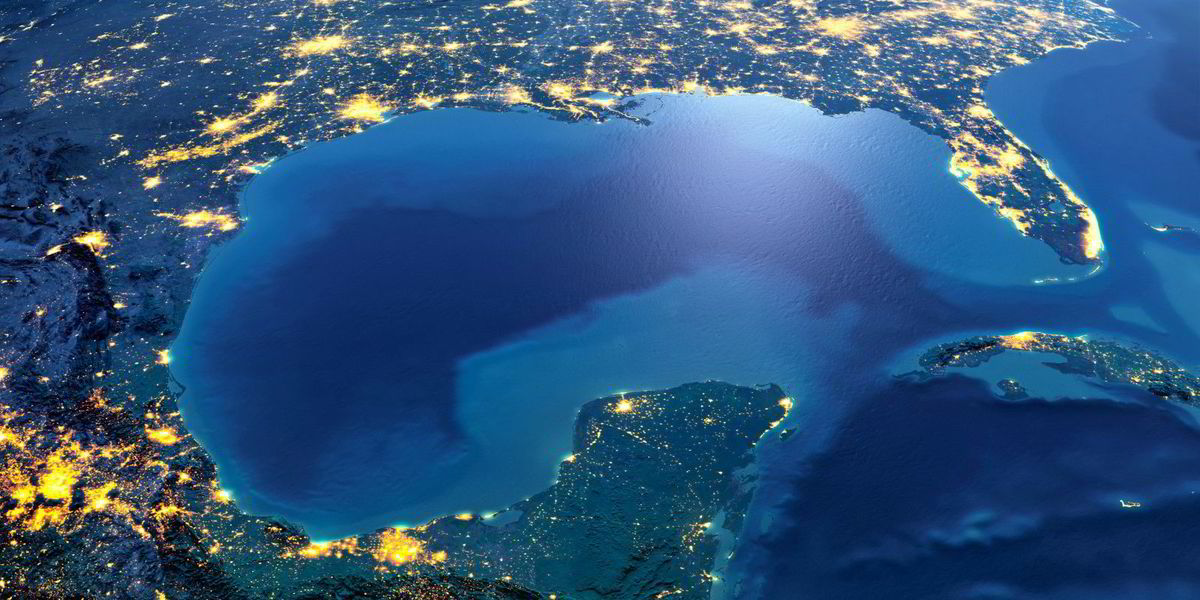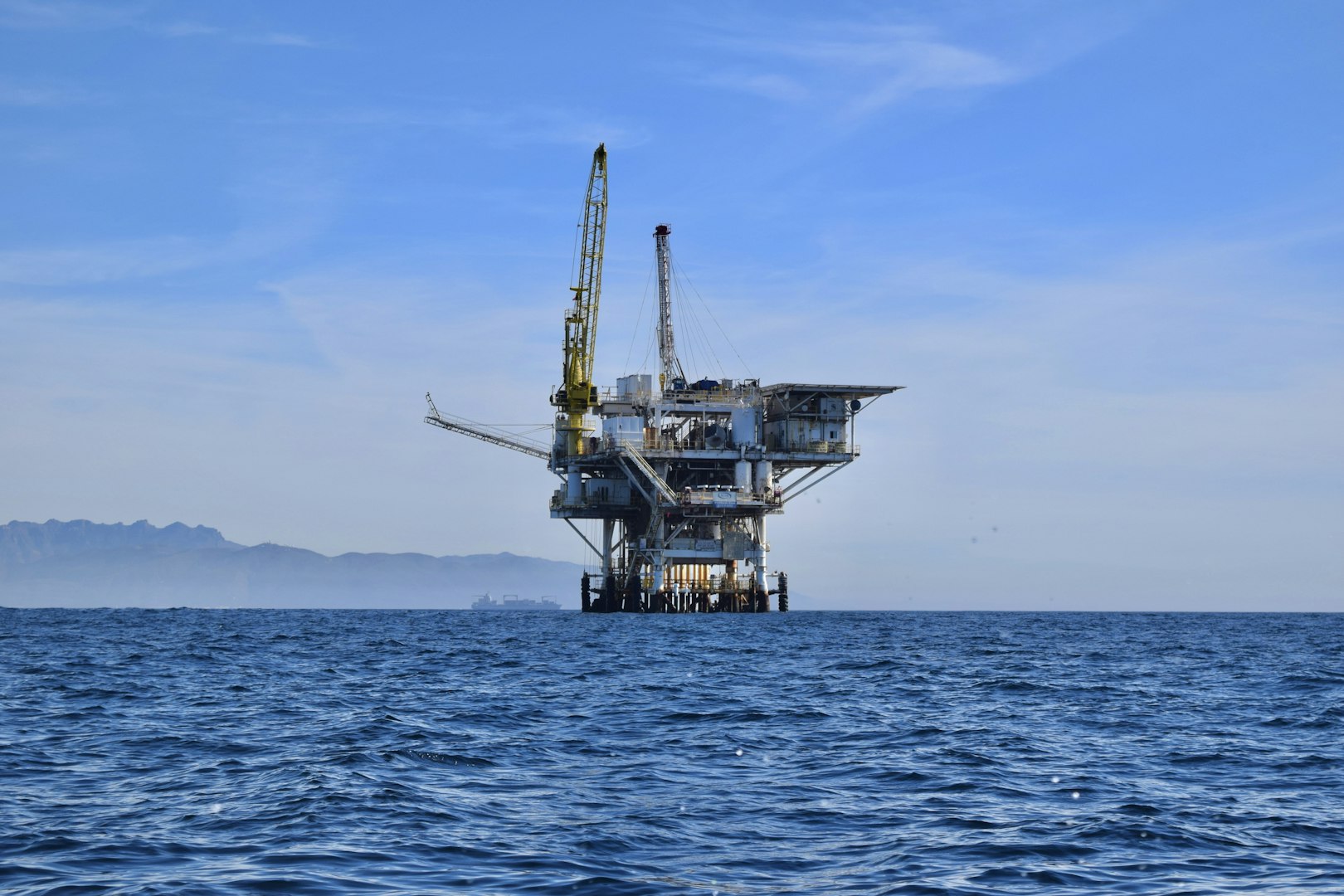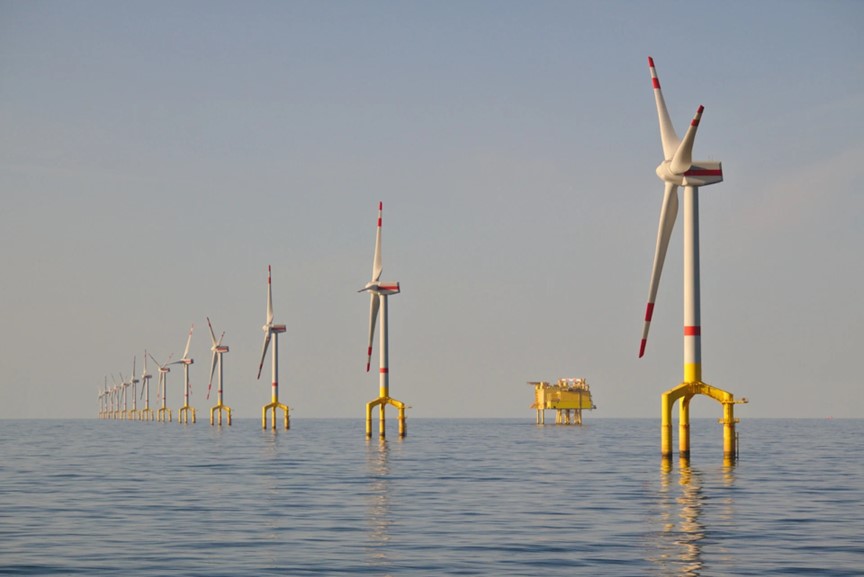

Offshore Wind Potential
More than two-thirds of the overall U.S. potential for offshore
wind – 2.8 terawatts (TW) is in deep waters (i.e. in water depths beyond 60
meters by offshore wind standards), which is only accessible through
cost-effective floating offshore wind energy technology. The Gulf of Mexico has the potential to generate almost 510,000
megawatts of offshore wind energy per year. That is twice the current energy need of all
five Gulf states, and larger than the potential offshore wind capacity of the
Pacific Coast and the Great Lakes combined.
Although 1/3rd of the U.S. shallow water resource is in the
Gulf of Mexico, most of the Gulf of Mexico’s oil and gas assets are in deep
(1,000 – 4,999 ft by oil and gas standards) and ultra-deep (5,000 and > ft)
waters.
Suitable port terminals and
piers are located near the offshore wind resources in the Gulf of Mexico. Warmer temperatures and smaller average wave
heights will increase offshore wind turbine accessibility and decrease
construction schedules. Some offshore oil and gas platforms may get a
second life as substations and serve as a base for wind farm operations and
maintenance roles.

Lease Sale
The
first ever auction of offshore wind energy development rights in the
Gulf of Mexico ended with a $5.6 million winning bid on August 29th,
2023. This offshore wind lease sale encompasses a 102,480-acre area, is 71 kilometers off the Lake Charles, Louisiana Coast, and has water depths of 10 - 25 meters.
Though
the bids were few in number, industry advocates hailed the first-ever
auction as an important milestone for the Gulf Coast’s evolving wind
energy sector. “As the Gulf of Mexico continues its evolution into a
broad-based and integrated energy hub, encompassing segments such as oil
and gas, wind, and with future prospects of carbon sequestration and
hydrogen, the opportunity for the first offshore wind project will be a
marker for the region,” National Ocean Industries Association President
Erik Milito said in a statement.

Greenhouse Gas Emissions
Bluefin Energy (USA) is one of two energy development companies currently targeting enhanced electrification of oil and & gas production platforms in the US Gulf of Mexico with floating offshore wind. Conventional electrification of oil and gas production platforms in the Gulf of Mexico is an established technology pioneered by Waldemar S. Nelson and Company, Inc. for Shell plc in the 1980s. However, these “all electric” platforms, are still powered by the combustion of hydrocarbons, typically natural gas.
By utilizing offshore wind, a portion of the existing emissions from this gas fired generation can be reduced and the life of producing oil & gas assets can be extended. It turns out that reducing greenhouse gas emissions (methane, carbon dioxide, and NOx) can also be a cost-effective remedy as well as a unique entry point for launching a floating offshore wind energy industry in the Americas.
By utilizing offshore wind, a portion of the existing emissions from this gas fired generation can be reduced and the life of producing oil & gas assets can be extended. It turns out that reducing greenhouse gas emissions (methane, carbon dioxide, and NOx) can also be a cost-effective remedy as well as a unique entry point for launching a floating offshore wind energy industry in the Americas.
